It was just about dawn on one morning a few weeks ago, freezing cold but with little wind, and Lake Worth was quiet. Joe Waller was up early as usual, standing in his yard near the lake’s edge.
 Waller does this on most mornings, and he loves what he sees. “When it’s cold like it was that morning, the lake is pristine,” he said. “The trees had lost their leaves, and that opened up just an incredible view. Just drop-dead beauty. It was one of those mornings where I felt just so blessed and lucky to live in such a place in such a wonderful city.”
Waller does this on most mornings, and he loves what he sees. “When it’s cold like it was that morning, the lake is pristine,” he said. “The trees had lost their leaves, and that opened up just an incredible view. Just drop-dead beauty. It was one of those mornings where I felt just so blessed and lucky to live in such a place in such a wonderful city.”
Waller, 64, has lived in that house on Lake Worth for 30 years. He’s president of the Lake Worth Alliance, a consortium of neighborhood associations. For about five years now, Waller and his cohorts have worked diligently for lots of improvements around the lake: better water and sewer infrastructure for residents, better streets, and a promise from the city to dredge out the silt that has shallowed out the lake in recent decades,
Their main objective, however, has been to get the City of Fort Worth to greatly improve the parks surrounding the lake. Lots of city dwellers want better parks, but usually their focus is on local parks, places for neighborhood residents to enjoy. But the Lake Worth activists have been thinking bigger: They want the city to combine existing parkland with other 950 acres or so of vacant land that the city also owns in the area to create a huge, integrated regional park system around the lake, a destination spot for folks from all over the city who want to swim and boat and ride bikes or just enjoy quiet open space.
The city council agreed to consider the idea. After all, Fort Worth is earning millions of dollars each year in royalties from park-based gas wells – some of which by law must be used on parks. Susan Alanis, director of the city’s planning and development department, estimates Fort Worth will get about $500 million in gas drilling revenue in the next two decades from city-owned property around and under the lake. The city has already earmarked $117 million of that for improvements in the Lake Worth area.
So for the past few years, Fort Worth staffers and planning consultants have studied how to improve this nearly century-old man-made lake. In 1917, the city touted Lake Worth and its surrounding open land as the “largest municipal park in the world.” But since then the lake has silted up to the point that few boaters now find it attractive. The dedicated parks – many of them small places that are little more than picnic areas – have been allowed to deteriorate. The picnic area at Mosque Point Park, for instance, on a bluff overlooking the lake, is covered with graffiti. And the other city-owned vacant properties in the area are places where scofflaws illegally dump their trash.
Since October 2008 the city has released three very long reports that prioritize various projects around the lake and estimate what they will cost.
But a big debate is brewing, specifically about what to do with the 950 acres of non-park property. Residents want the acreage dedicated and used as parkland. City staffers want to sell some – possibly as much as 40 percent of it – to private developers for environmentally friendly, mixed-use projects that would include high-density housing, retail, and commercial properties.
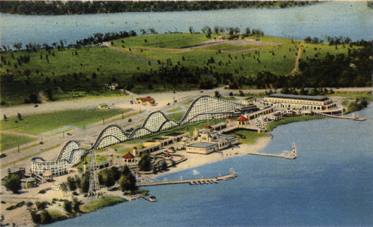 City staffers see this part of Fort Worth as a fast-growing area where development will occur anyway. The “sustainable communities” they have suggested would increase the city’s tax base. The land could be sold to private developers, but with special conditions, such as requiring that developers present master plans that would be approved by the city. Staffers tout it as a way for the city to control the development that occurs around the lake.
City staffers see this part of Fort Worth as a fast-growing area where development will occur anyway. The “sustainable communities” they have suggested would increase the city’s tax base. The land could be sold to private developers, but with special conditions, such as requiring that developers present master plans that would be approved by the city. Staffers tout it as a way for the city to control the development that occurs around the lake.
But many area residents don’t see the need to develop that city-owned land in the first place. They see the vacant 950 acres as a golden opportunity that won’t come again. The biggest cost to developing parks is land acquisition, they say, and the city already owns the land that could become a priceless park asset, help preserve the integrity of the city’s water supply, and fulfill the dreams that other city administrators touted so long ago.
“What [the city planners] have proposed has just floored me,” said retiree Bob Crow, who has lived on the lake for much of the past 60 years. “We have this opportunity to preserve open space for future generations. This will become a place that all the citizens in Fort Worth will have access to, not just those of us who live up here. The city needs to make investments in its future, and a big part of that future is making sure we have great parks for everyone.
“For crying out loud, sustainable communities can go anywhere,” Crow said, pointing out that there are hundreds of acres of undeveloped private properties in close proximity to the lake. “If the developers see a market for these mixed-use projects … let them do it. We are not opposed to development. But what [the city] is doing is pretty much the same thing as putting a private development in Trinity Park.
“I think some in the city planning department think this is their property, and they want to do something that their peers will think is so unconventional and cutting-edge,” Crow said. “But they have it backward. This is land owned by the citizens of Fort Worth, and they should be looking at uses that benefit all the people of this city.”
City staffers talk about balancing the needs of park users and developers in planning the future of the land. Park proponents see a much bigger balance at stake, between the inevitable continued growth of a sprawling city that inexorably gobbles up countryside and the needs of the dwellers in that city for open space.
But another balancing act is also a factor – balancing the city budget. The city’s need for tax dollars from development and the amount of money it has or hasn’t spent on Fort Worth parks over the decades are a big part of the Lake Worth story.
Fort Worth is one of the few major cities in the country without a large regional park. True, in the Trust for Public Land’s list of the 150 largest city parks, the Fort Worth Nature Center, with 3,500 acres, comes in at number 27. But the nature center, which charges admission, is more wildlife refuge than easily accessible park.
Cobb Park (152 acres) and Gateway Park (503 acres) are the city’s largest parks, but they don’t even come close to cracking the Trust for Public Land’s top 150 (Dallas’ White Rock Creek Greenbelt comes in at number 149 at 773 acres). Fort Worth also doesn’t spend much money on parks compared to other cities: Although it’s the 17th largest city in the country, Fort Worth ranks 55th in per capita spending on parks.
Parks in the city tend to be small, and aside from the Trinity River greenbelt, there is little connectivity. And while the city manages to find ways to get tax breaks into private developers’ hands, the cupboard is all too often bare when discussing more – and larger – parks for the citizenry.
 In concept, the city is trying to do both parks and private development around Lake Worth. In November 2008, city officials brought in five experts in national urban planning and environmental quality for a three-day workshop on Lake Worth. The panel emphasized that the city must protect the lake’s water quality (Fort Worth gets about one-fourth of its drinking water from Lake Worth), create a larger regional park around the lake, connect communities with hike-and-bike trails, and look into using land for high-density developments.
In concept, the city is trying to do both parks and private development around Lake Worth. In November 2008, city officials brought in five experts in national urban planning and environmental quality for a three-day workshop on Lake Worth. The panel emphasized that the city must protect the lake’s water quality (Fort Worth gets about one-fourth of its drinking water from Lake Worth), create a larger regional park around the lake, connect communities with hike-and-bike trails, and look into using land for high-density developments.
But the experts on the panel didn’t recommend giving a high priority to more green space, and they cited the parks budget as one reason. They recommended that the city create “model sustainable communities” around the lake, with environmental features to filter stormwater runoff before it gets into the drinking water supply.
In the Lake Worth Vision Plan, the draft study released by the city in October, these model communities were described as demonstrating “sustainable community design principles, such as mixed-use neighborhood centers, connected and pedestrian-friendly street grid patterns, a provision of a broad range of housing choices, and off-street pathway linkages between neighborhoods and nearby destinations such as schools, shopping, and Lake Worth’s lakeshore path.”
In other words, the new communities would be much more urban than existing neighborhoods around the lake.
“It’s like they are trying to bring downtown to the Lake Worth area,” said 20-year resident Gale Cupp, a microbiologist who served on the Fort Worth Parks Board for six years and is chairwoman of the Neighborhood Association on Lake Worth and board member of the Lake Worth Alliance. “Don’t get me wrong – what is going on downtown is fantastic. It is appropriate for that area.
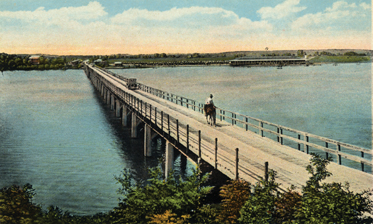 “But you have to balance keeping open space available versus so much residential [development],” she said. “We support these mixed-use developments but not when they take away large open expanses of precious land around this lake. Because once you develop the property, it will never revert back. It is gone forever.”
“But you have to balance keeping open space available versus so much residential [development],” she said. “We support these mixed-use developments but not when they take away large open expanses of precious land around this lake. Because once you develop the property, it will never revert back. It is gone forever.”
The proposed new developments would be concentrated in three areas: just north of Loop 820 near the cities of Lake Worth and Sansom Park; across the inlet and directly east of the nature center; and just west of the Fort Worth Naval Air Station Joint Reserve Base.
Alanis said the panel was charged with looking at the big picture, not just at what to do with the vacant properties.
“We know there is going to be growth out there, and controlling the quality of development by using privately held smaller parcels will be a big challenge,” she said. “But we don’t foresee having the high-density downtown style developments.
“The city is just looking at having some control out there,” Alanis said. Development on private property can be controlled somewhat by zoning rules, but in selling off chunks of the 950 acres for development, the city could make developers show specific plans before the city sells the land to them, she said. “But nothing is set yet,” she said. “We are looking at all the opportunities.”
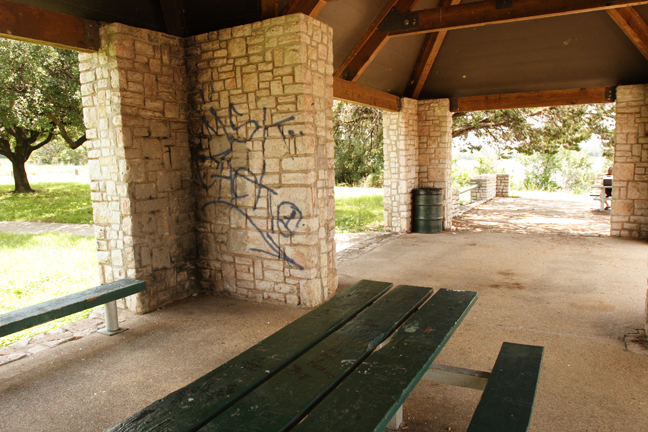 Consultant panel member Mark Dawson, a landscape architect for urban planning firm Sasaki Associates, which has offices in Boston and San Francisco, said the city is looking for a balance between green space and development. But that is often difficult, he said.
Consultant panel member Mark Dawson, a landscape architect for urban planning firm Sasaki Associates, which has offices in Boston and San Francisco, said the city is looking for a balance between green space and development. But that is often difficult, he said.
“A couple of things come into play when deciding what to do in planning for an area like Lake Worth,” Dawson said. “Fort Worth is like any other city; they need to bolster their tax base. Given the nature of the community near Lake Worth, it seemed to make sense that there could be some modest-scale mixed-use development in this project.
“The problem we saw was that putting more open space into the city’s already burdened park maintenance budget would be difficult,” he said. “Cities already have trouble maintaining what they have. But the broader issue is what is best for the entire city. Open space just for the sake of open space is one thing. But just preserving open space doesn’t mean it’s always a good thing.”
But Dawson also said the panel’s recommendations should not be the last word. “The consultant team was only there for three days,” he said. “We batted around some ideas. We listened to city staff and residents. We came up with two scenarios to be considered: a great park plan and a sustainable communities plan. The city can choose one or the other or do a combination of both.”
What irked many Lake Worth activists were the differences between the consultants’ report and the city’s draft study released in October. The city planners had added more residential development than what the consultants envisioned. “The consultants had more balance in parks and mixed-used development,” Crow said. “I know the city’s plan is still in draft form, but it was still very shocking for most of us that the city staff added more development.”
Not everyone sees selling the land for development as the best way to make money for the city. Michael Dallas, 46, a financial advisor and president of the Scenic Shores Neighborhood Association, said a big regional park could be an economic asset for the city if it forgoes the urban development idea. “Every great city has a great park,” he said. “You can measure the wealth of a city by its parks. And we are not talking about wealth in terms of dollars. We are talking about quality of life wealth.
“Corporations move to cities for the quality of life for their employees,” he said. “In this case, a huge park with all sorts of activities from trails to boating to wildlife preservation will be an asset for the city in job creation and economic development.”
Fort Worth was growing in the early 1900s and needed a clean water supply and flood control. The city solved those problems by damming the West Fork of the Trinity River in 1914. One side benefit was the great recreation possibilities created by the newly formed lake. The city owned tons of land around it and initially leased much of the lakeside to operators of fishing camps.
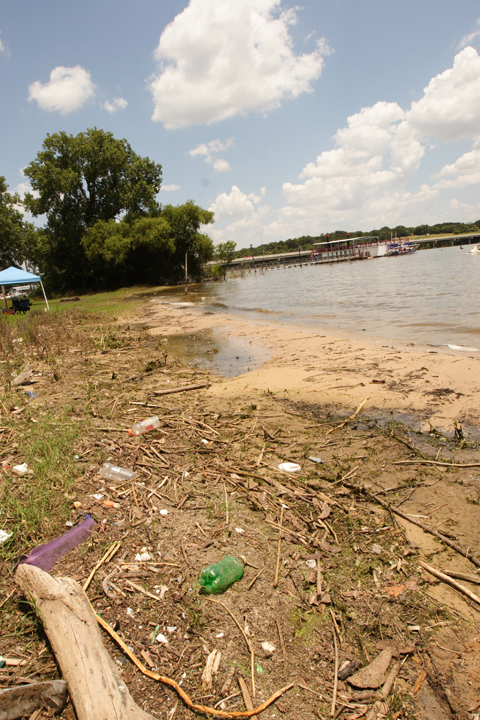 In 1916, the city built a beach near where Jacksboro Highway now crosses the lake. Casino Beach became a favorite recreation spot for Fort Worthians; over time, an amusement park, a 400-foot boardwalk along the lakeshore, and a ballroom featuring big band music were added. From boaters to bathers, from ballroom dancers to fishermen, Lake Worth became a destination for all kinds of Cowtown residents.
In 1916, the city built a beach near where Jacksboro Highway now crosses the lake. Casino Beach became a favorite recreation spot for Fort Worthians; over time, an amusement park, a 400-foot boardwalk along the lakeshore, and a ballroom featuring big band music were added. From boaters to bathers, from ballroom dancers to fishermen, Lake Worth became a destination for all kinds of Cowtown residents.
Throughout the 20th century, the city-owned lakeshore morphed from fishing camps and vacation cottages to wealthier mansions and single-family homes. The so-called Lake Worth Castle near Heron Bay was built in the 1920s by Samuel Whiting, reportedly after he won the property in a poker game.
Residents were allowed to lease the land from Fort Worth, with an option to buy once water and sewer lines served the property. Most have acquired the land under this plan, though a handful of residents still lease their property from the city.
In the 1930s and 1940s, Carswell Air Force base and the “bomber plant” (started by Consolidated Vultee and now Lockheed Martin) were built on the southern end of the lake. That spurred more economic development around the lake but also became a source of pollution. Polychlorinated biphenyl toxins (PCBs) were used by both the air force base and the bomber factory as engine lubricants and coolants, and the runoff went into the lake. There are still PCB contaminants in the sediment near the inlets on the south side of the lake.
Since 2000, the Texas Department of Health has warned against eating fish caught in Lake Worth due to PCB contamination. The water quality is not affected, however, because PCBs are not soluble in water and are now lodged in the lake bottom sediment.
The lake has never been dredged, and sediment runoff through the years has reduced its capacity by about a third. The increasingly shallow conditions have made boating on the lake difficult and dangerous.
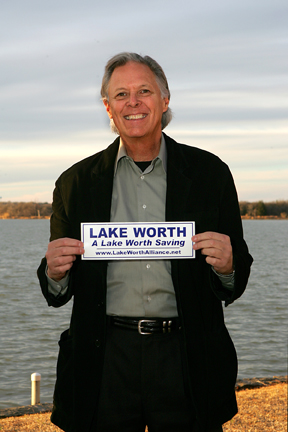 The lack of dredging “was really a financial issue,” said Fort Worth Water Department spokesperson Mary Gugliuzza. The city was working with the United States Army Corps of Engineers starting in the late 1990s to dredge the lake, she said, but the corps stopped doing such projects after Hurricane Katrina, citing a lack of funding. The city will still need a Corps of Engineers permit for the dredging, which could be issued in about a year, but there will be no accompanying Corps funding.
The lack of dredging “was really a financial issue,” said Fort Worth Water Department spokesperson Mary Gugliuzza. The city was working with the United States Army Corps of Engineers starting in the late 1990s to dredge the lake, she said, but the corps stopped doing such projects after Hurricane Katrina, citing a lack of funding. The city will still need a Corps of Engineers permit for the dredging, which could be issued in about a year, but there will be no accompanying Corps funding.
Quentin McGown, a local attorney, author, and historian, said that dredging and park maintenance were neglected because “there was never a unified vision for what Lake Worth was and what it meant to this city.” Oversight of the lake and surrounding 950 acres was passed around from city department to city department. Sometimes the water department ran it, sometimes parks and recreation, sometime planning, he said.
“I think that’s why it deteriorated so badly,” McGown said. “There was no ownership from the top. And there were different interest groups out near the lake. You had the military advocating one thing, landfills nearby that wanted other stuff. Some people that lived out there had been there a long time and saw it as rural; newcomers [saw it] as almost quiet suburbia.”
Dredging the lake would add more water-supply capacity, improve boating and other recreational uses, and provide some environmental cleanup. The city has appropriated $30 million for the dredging. The part of the lake with the highest concentrations of PCBs will not be dredged, to avoid stirring up those now-buried toxins. Dredging operations will also steer clear of the nature center, to avoid disturbing the wildlife that depends on the shallow water and plant life there.
But most of the lake south of Loop 820 will be dredged, adding 6 to 12 feet to its depth and reopening many areas to boating.
“Over time, we have found it is just very difficult to find parts of the lake where we can sail at all, with it being so shallow and tree stumps pushed up to the surface,” said Crow, a board member of the Lake Worth Sailing Club, which celebrates its 75th anniversary this year. “Dredging won’t solve all the boating problems, but it will certainly be an improvement.”
Dredging was rated the most important facet of the reclamation of Lake Worth by local residents. “This all really started out as a plan to clean up the water and to provide a lake depth so that people could use this for recreation,” Waller said. “But as we thought about it more, we figured if more people are going to use this asset, we’d need more park space for all these additional users.
“That’s why we think using the city-owned vacant property for parks is the common-sense thing to do,” he said. “This goes hand in hand with the original intent: a cleaner and deeper lake and better ways for all Fort Worth residents to have access to this city asset.”
There are 19 dedicated city parks around Lake Worth, adding up to almost 1,000 acres, but most are like Camp Joy Park on the lake’s southern shore: a sliver of land with some picnic tables and a little bit of sand that some might consider a beach. But because the city doesn’t spend much money on park maintenance (it ranks 53rd among U.S. cities), Camp Joy, like other lakeside parks, is in disrepair.
Waller thinks budget issues should not be a factor in the decision over whether to save or develop the land around Lake Worth – property that, going back 90 years, has always been touted as future park land. “We have the property, we have the Barnett Shale money, and we certainly have the need,” he said.
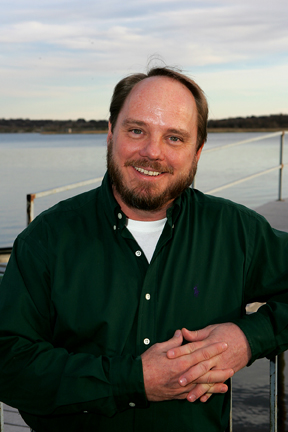 The residents who have been active in the Lake Worth planning process are not opposed to all development. Case in point: the Casino Beach property off Jacksboro Highway, which has deteriorated in recent years to the point that it is now little more than a parking lot for fishermen who cast from the dirty shore.
The residents who have been active in the Lake Worth planning process are not opposed to all development. Case in point: the Casino Beach property off Jacksboro Highway, which has deteriorated in recent years to the point that it is now little more than a parking lot for fishermen who cast from the dirty shore.
The Lake Worth Vision Plan calls for Casino Beach to be redeveloped as a mixed-use, recreation-oriented area, “a compact, walkable mix of restaurants, specialty retail establishments, water-oriented recreation, and perhaps some higher-density housing or lodging.”
Ev Muelder, secretary of the Lake Worth Alliance, thinks the Casino Beach plans are a good fit. “There is good access from Jacksboro Highway, there is a historic element from its days as a place where people congregated, and the increased tax base is a huge consideration,” she said.
Pat Hyer, president of the East Lake Worth Neighborhood Association, said, “There has to be a balanced approach to mixing park and economic development. Some of the areas they are talking about, like Casino Beach, are good ideas. Others need to be rethought.
“But I can honestly say we are having a good working relationship with the city on these issues,” she said. “They are listening to our concerns, and I think we can work some of the differences out.”
Still, both Muelder and Hyer want the city to add as much new park property as possible around the lake. Both use the term “unique opportunity.”
“This is going to be the geographic center of the city in about 10 to 15 years,” Muelder said. “There is much private land that is near enough to the lake but not right on it that can be ripe for development. We have a unique opportunity to do something wonderful for this city. But we cannot get rid of this open space. It will be gone forever.”
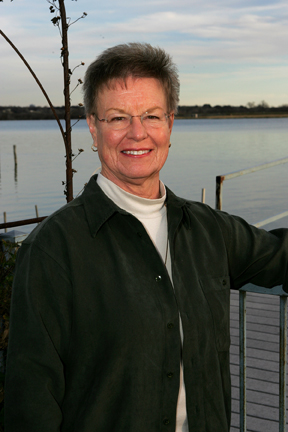 The pressure from the Lake Worth residents has had an effect at city hall. The advisory panel originally recommended that a hike-and-bike trail be built next to the lake. That would require the city to acquire easements across private lakefront property, something the residents vehemently opposed. When the draft study was completed, the easement plans were gone.
The pressure from the Lake Worth residents has had an effect at city hall. The advisory panel originally recommended that a hike-and-bike trail be built next to the lake. That would require the city to acquire easements across private lakefront property, something the residents vehemently opposed. When the draft study was completed, the easement plans were gone.
The overall Lake Worth plan was to be presented to city council this month, but that has been delayed. Alanis said there is no formal timetable now. She emphasized that previous recommendations were only preliminary drafts.
“When the [80-page] draft report came out in October, many residents misinterpreted that as a finalized plan,” she said. “But we are listening to residents and stakeholders and working with them. We see Lake Worth as an asset to the city of Fort Worth, and we have the opportunity to do some great things for the city.”
City council member Carter Burdette, whose district includes the lake, said the city “should be as flexible as we can right now. City government’s duty is to make the best choices for all the city.” And he thinks dedicating the vacant property for parks right now would be unwise, since state law mandates that such a dedication cannot be reversed.
“[The city council] should dictate what goes on around Lake Worth,” he said. “We already have a great deal of dedicated parks around the lake, and development is coming that way. We can choose developments that are environmentally compatible with the lake, and we can create a guide and example for other developments on private property nearby.”
He also discounted residents’ opposition to the mixed-use developments on city-owned property. “If the city dedicates that land as parks, it will never be reversed,” he said, “and the residents out there will know that they can live around the lake without any new neighbors around them. We’ll have to see if a plan like that is good overall for the city.”
![Hyer: “[The city is] listening to our concerns, and I think we can work some of the differences out.” Lee Chastain feat_9](https://www.fwweekly.com/wp-content/images/stories/images/1-27-2010/feat_9.jpg) McGown said the city’s plan for Lake Worth needs to pay homage to the lake’s history. “When they first built that dam, it was almost like a wilderness out there,” he said. “It was like a big national park, but only 10 miles from the downtown area.”
McGown said the city’s plan for Lake Worth needs to pay homage to the lake’s history. “When they first built that dam, it was almost like a wilderness out there,” he said. “It was like a big national park, but only 10 miles from the downtown area.”
McGown said master park designs for the land around Lake Worth go back as far as the 1920s and included the vacant property now at the heart of the debate. The roads were designed like “scenic park roads,” and places like Casino Beach “had a history in Fort Worth that were as important as anything else done here,” he said.
“Open space and recreation have always been a part of Lake Worth,” he said. “But it is hard to do any of that now. The parks aren’t linked by any trails, and housing has been built up. This city doesn’t need more development up there, at least not on public land. It’s obvious the city needs a better park system, and we have the means in place to do something about that.”
McGown thinks the problem with the building of mixed-use communities near Lake Worth – aside from squandering green space – is that it will completely change the character of the area. “As you have more housing and businesses, the roads will have to be widened, and the traffic will still be congested,” he said. “The quiet, park-like atmosphere will be gone forever. But I’m glad to see the conversation going on right now. This is a golden opportunity for Fort Worth to get it right.”
Waller sees the same issues. “We are not anti-development, and there is plenty of private property in close proximity to the lake where that could be done,” he said. “As homeowners, our property values would go up if that were to occur.
“But as a city, we have to do new park development as the population grows,” he said. “And the best place to do that is around Lake Worth. We already own the land, and with a long-term plan, we can create a unique environment that will make this one of the best open-space and recreation areas in the state.”



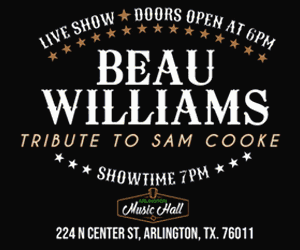








PLEASE DO SOMETHING WITH LAKE WORTH, ITS CLOSE TO A LOT OF PEOPLE AND NEEDS TO BE TAKEN CARE OF, THANKS. 7 MILES AWAY. JOEY K.